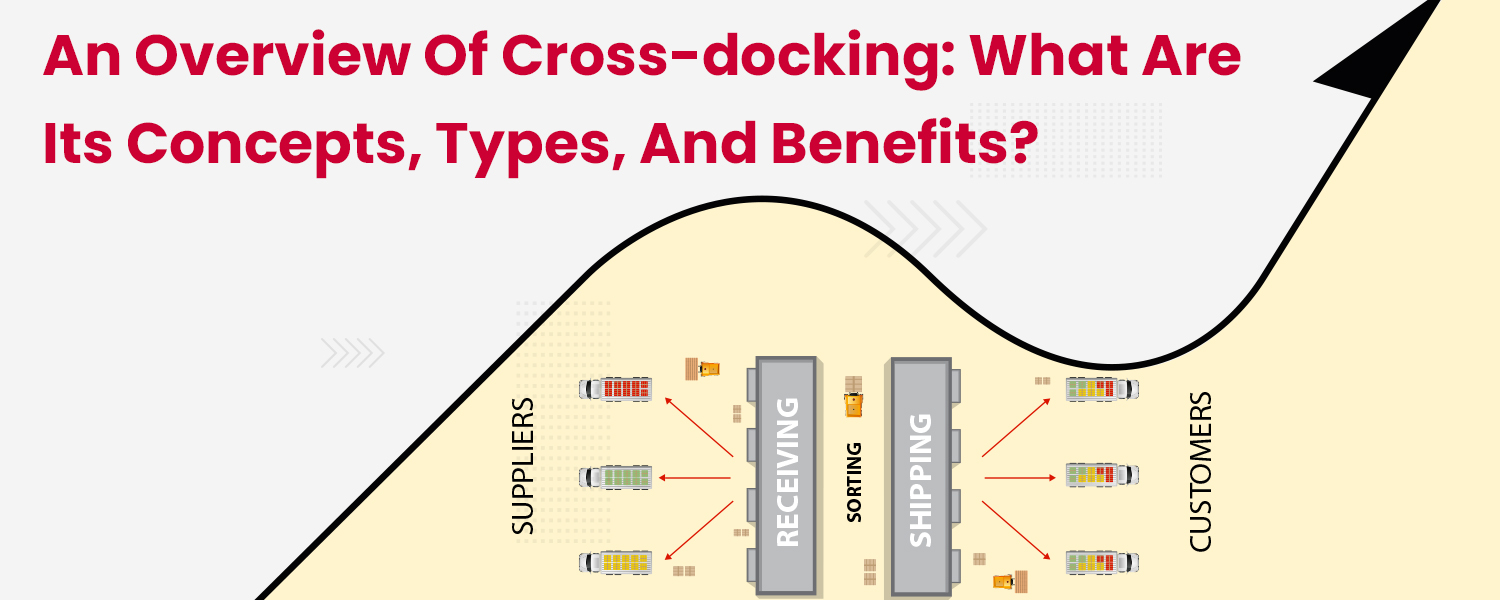In the supply chain business, speed and efficiency are still the most important factors. With more eCommerce stores opening every day, logistics is becoming increasingly crucial to keep up with the rising order volume. Even while technological advancements have improved inventory efficiency, it still falls short in many instances. Different logistics companies are attempting to employ the Cross Docking strategy to cut inventory costs, resulting in less money being locked up in inventory.
That implies that the products will be delivered directly to the buyer from the seller’s hub rather than being held in a warehouse. It is a transportation-optimized solution that is a cost-effective strategy for any business.
Types of Cross-docking
It is not only about lower warehousing costs; it is also about better delivery process efficiency.
There are two variants of this procedure:
- Pre-Distribution
- Post-Distribution
1. Pre-Distribution Cross-docking
Pre-Distribution involves unloading, arranging, and repacking products according to pre-determined distribution guidelines. Before the product leaves the seller’s hub, the buyers are noted down at the end of the day.
2. Post-Distribution Cross Docking
The arranging of products is put on hold in the Post-Distribution docking till the customers are listed down. That means the products will be kept at the distribution unit for a longer period. The approach aids sellers in making more informed decisions about shipping, sales forecasts, inventory, and trends.
Why is Cross Docking Used?
It is mostly used for a product in great demand and, as a result, is supplied in large quantities. It is particularly beneficial to fast-moving products, as it reduces the time they must be stored.
Cross-docking is well-known for increasing warehouse productivity. Even if it is not appropriate for many company models, it may be quite beneficial to some.
Benefits of Cross Docking
It has many advantages for online and eCommerce businesses, some of which are outlined below.
1. Material handling is simple
Material handling becomes much simpler and more fluid. Cross-docking boosts operating efficiency and productivity significantly. It also improves the functionality of in-motion weighing and labeling, label verification, and destination scanning, among other things.
2. There is no need for a warehouse
Warehouses are frequently replaced with cross-dock offices, which are easier to construct and take up less space. It now provides a company with both fixed and variable resource cost investment funds. When using a shipping aggregator for cross-docking, the cross-dock distribution center is usually the best option.
3. Reduces the Cost of Packaging and Storing
Inventory and storage costs are reduced dramatically since the products are held for a shorter time.
4. Costs of Transportation and Distribution are Reduced
The trucks do not need to make repeated stops because all products are dropped off at the terminus. It reduces the overall cost of transportation. The trucks are completely loaded, and all of the products are shipped at the same time. Because fewer miles are driven, less fuel is wasted, lowering the overall transportation and distribution cost.
5. Product Screening that Works
With automation and streamlining at the terminals, products will be inspected more effectively, resulting in a considerable reduction in the time parcels spend in transit.
6. Product Delivery Time is Reduced
As a result of the effective screening procedure, there will be a high product turnover, implying that products will now be supplied to customers more quickly.
7. Inventory Handling Risks are reduced
Because there is no requirement for a warehouse, the inventory management risk is minimal. Products are significantly safer and are less likely to be stolen or destroyed while at the warehouse.
8. Less Expensive
Cross-docking terminals are significantly less expensive to put up than a structure or to rent a typical warehouse.
9. Labor costs are lower
Because there is no warehouse, the number of product handling laborers is also reduced. As a result, the overall shipping costs and labor expenses are reduced.
What Products are Appropriate for Cross Docking?
It is particularly advantageous for fresh and natural products, as well as crowd-funding fulfillment and high-demand items. Take a look at the explanation below for further information.
1. Perishable Goods Inventory
Perishable products benefit from cross-docking. It can be used for items that come after the last in, first out, or First out. Products such as fresh goods are supplied first, for example. Non-perishable commodities such as cookies, soaps, and packaged goods arrive last.
2. Demand-driven Products
Certain products, such as phones and clothing, are always in great demand and require less storage time. These items are compatible with the cross-docking model that can help you save money. However, before moving on, be sure you have reliable data.
3. Flash sales on the internet
eCommerce platforms that launch a black Friday or clearance sale campaign generally have many orders to fulfill. When you have to deliver something faster, and at a lower cost, cross-docking comes in handy.
Understanding the benefits and drawbacks of cross-docking, as well as how they fit into your company or function, is critical. In the network cycle, it is an important aspect for measuring and boosting productivity. As a result, make certain you are aware of these crucial elements. For example, cross-docking is ideal for high-volume products, fast-moving commodities, and perishable goods.
Conclusion
Cross Docking is a transportation-optimized solution that is a cost-effective cost-cutting strategy for any business. We hope this blog has provided you with the required information if you intend to try cross-docking.




